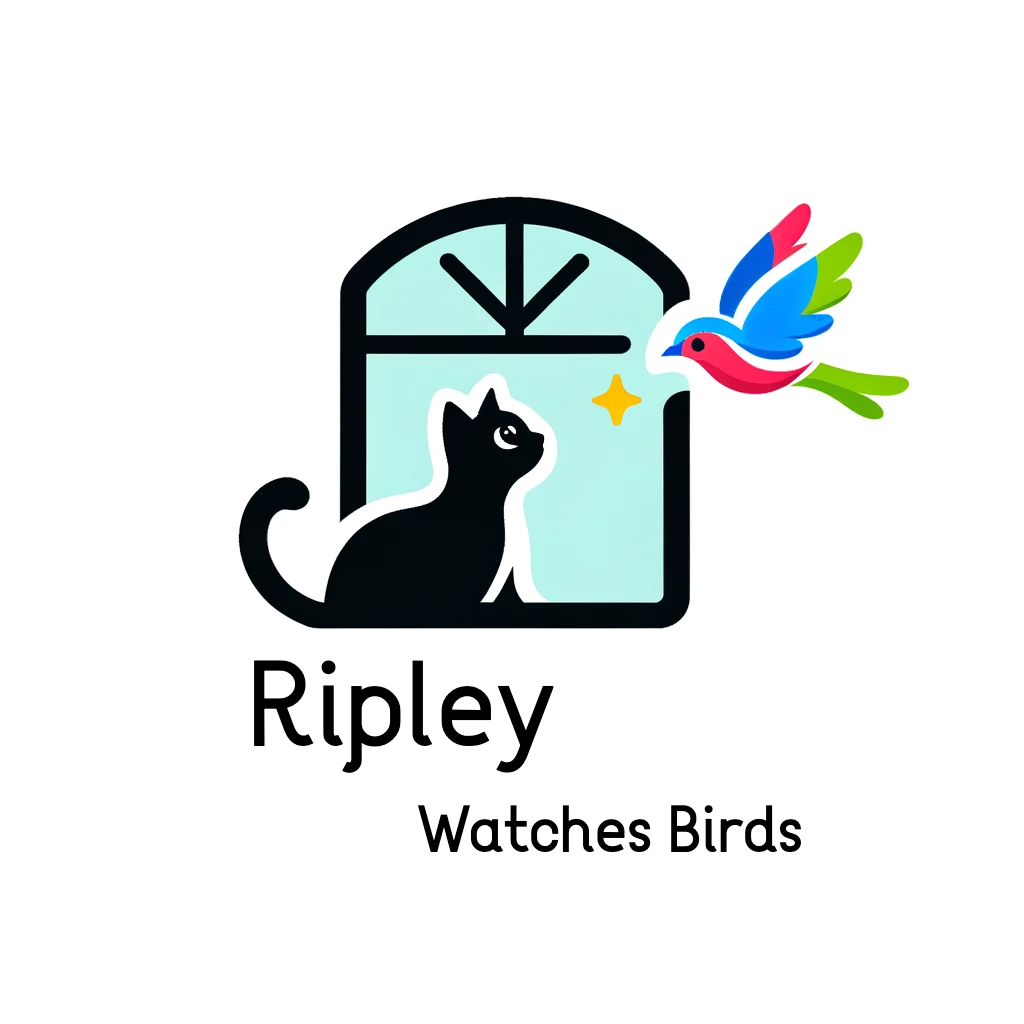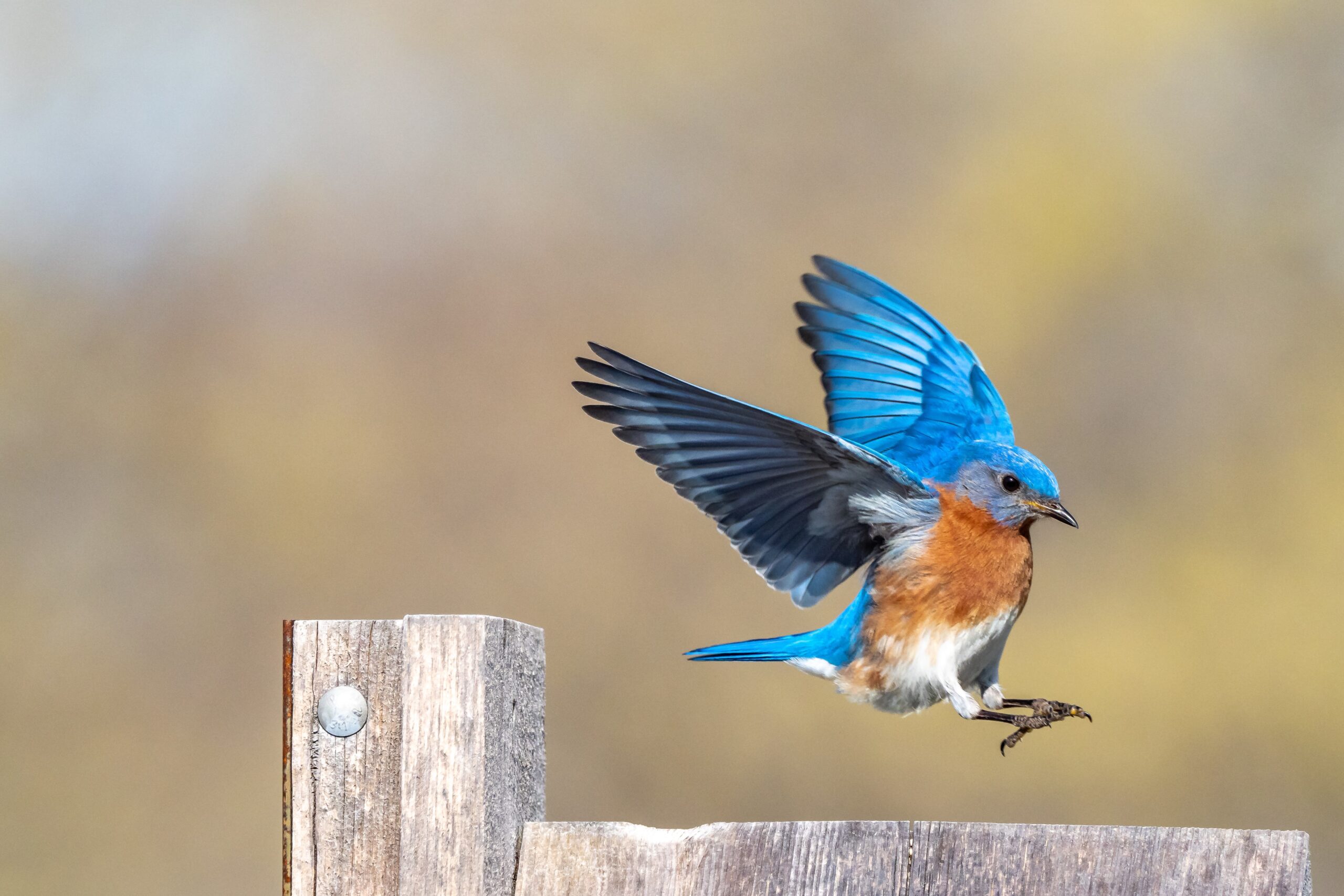Welcome to the enchanting world of bluebirds!
These avian gems, with their vibrant blue plumage and cheerful songs, are a coveted sight in any garden. Known for their vivid colors—males boasting brilliant blue backs and rosy breasts, while females display a more subdued yet equally beautiful hue—bluebirds are more than just a visual treat. Their presence symbolizes joy and serenity, making them a beloved addition to backyards across the country.
But attracting these delightful creatures involves understanding their needs and habits.
In this guide, we’ll explore how to transform your garden into a bluebird paradise, creating a haven that meets their specific requirements for food, shelter, and more.
Whether you’re a seasoned birdwatcher or a budding enthusiast, prepare to embark on a rewarding journey into the world of bluebirds!
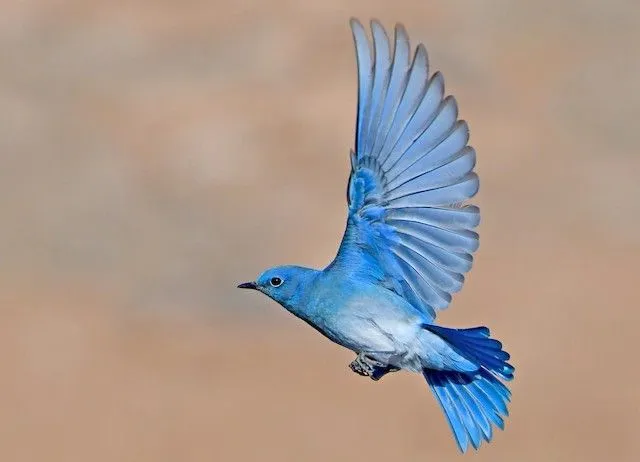
Understanding Bluebirds: Habits and Preferences
Bluebirds, belonging to the thrush family, are primarily found in North America.
These small, insectivorous birds are known for their preference for open habitats like fields and meadows, where they can easily hunt for insects.
There are three species of bluebirds: the Eastern Bluebird, the Western Bluebird, and the Mountain Bluebird, each adapted to different environments but sharing similar habits and needs.
- Species Specifics:
- Eastern Bluebird: Found east of the Rockies, known for its bright blue color and rose-colored chest.
- Western Bluebird: Resides west of the Rockies, sporting a deep blue hue with a rust-colored throat.
- Mountain Bluebird: The most nomadic, dwelling in the Rocky Mountains and the Great Basin, recognized by its all-over sky-blue coloration.
- Dietary Habits:
- Bluebirds primarily feed on insects, making them excellent natural pest controllers. They enjoy a diet rich in beetles, caterpillars, grasshoppers, and spiders.
- During the winter, their diet shifts to include berries and small fruits, as insects become scarce.
- Behavioral Traits:
- Known for their “hovering” technique, bluebirds can spot insects from a perch and then hover above the ground before swooping down to catch their prey.
- They are social birds, often seen in small flocks during non-breeding seasons, and they exhibit a strong territorial behavior during the breeding season.
- Nesting Preferences:
- Bluebirds prefer nesting in cavities, either in old woodpecker holes or in man-made nesting boxes. They tend to avoid dense forests, favoring open spaces that offer clear visibility and easy access to food.
Understanding these aspects of bluebird life is crucial in making your garden an inviting space for them. In the following sections, we’ll delve into specific strategies and tips to cater to their dietary needs, provide appropriate shelter, and create a habitat that mirrors their natural environment.
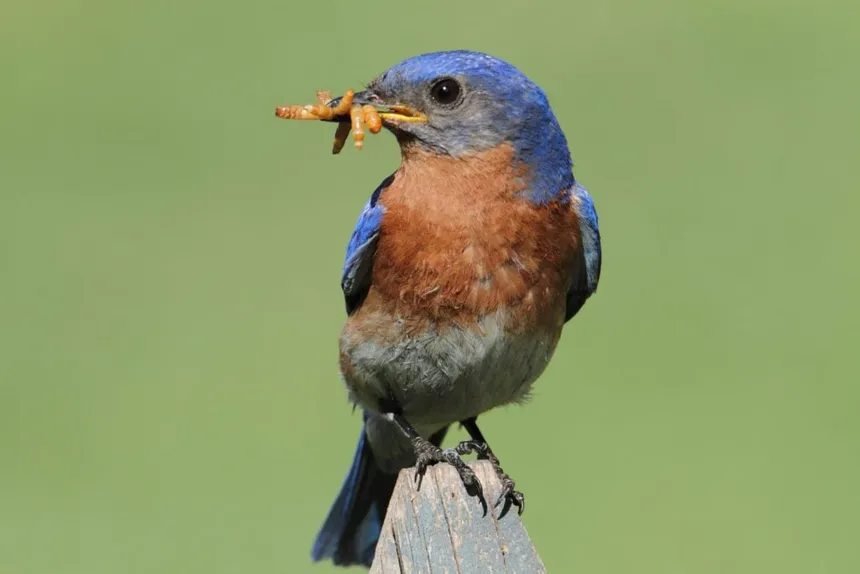
Nutritional Needs – A Bluebird’s Menu
Creating a bluebird-friendly garden starts with understanding their dietary needs. Bluebirds are primarily insectivorous, meaning a significant portion of their diet consists of insects. By providing the right kind of food, you can make your garden an irresistible stop for these feathered friends. Let’s delve into the specifics:
Insect Delight – The Role of Mealworms and Other Insects
Mealworms are like gourmet treats for bluebirds. These high-protein larvae are not only nutritious but also highly appealing to bluebirds. Here’s how you can incorporate mealworms into your garden:
- Mealworm Feeding Station: Set up a dish feeder in a visible spot and regularly fill it with live or dried mealworms. Live mealworms, in particular, can be a dynamic attraction, mimicking the movement of natural prey.
- Balanced Diet: While mealworms are a great supplement, it’s important to provide a variety of insects. Consider cultivating a garden that naturally attracts a range of bugs. Planting native shrubs and flowers can encourage a healthy insect population, offering a natural buffet for bluebirds.
- Feeding Tips: During the nesting season (early spring through late summer), bluebirds need extra nutrition. Increase the amount of mealworms during this time to support the adults and their growing chicks.
The Organic Approach – Avoiding Chemicals in Your Garden
- Natural Insect Supply: Insecticides and pesticides can drastically reduce the number of insects in your garden, depriving bluebirds of their natural food source. Moreover, chemicals can be harmful to birds directly.
- Organic Practices: Embrace organic gardening practices. Use natural compost for fertilization and consider natural pest control methods, like encouraging beneficial insects that prey on garden pests.
- Water Management: Avoid using chemicals near water sources. Bluebirds, like many birds, are sensitive to polluted water, which can affect their health.
- Education and Awareness: Stay informed about organic gardening techniques and the impact of chemicals on wildlife. Sharing this knowledge with neighbors can amplify the benefits, creating a larger, safer environment for bluebirds.
By focusing on a natural, insect-rich diet and maintaining an organic garden, you’re not just catering to the bluebirds’ current needs; you’re also contributing to a sustainable environment that supports their future.
In the next sections, we’ll explore how to provide the perfect water sources and shelter to make your garden a true bluebird sanctuary.
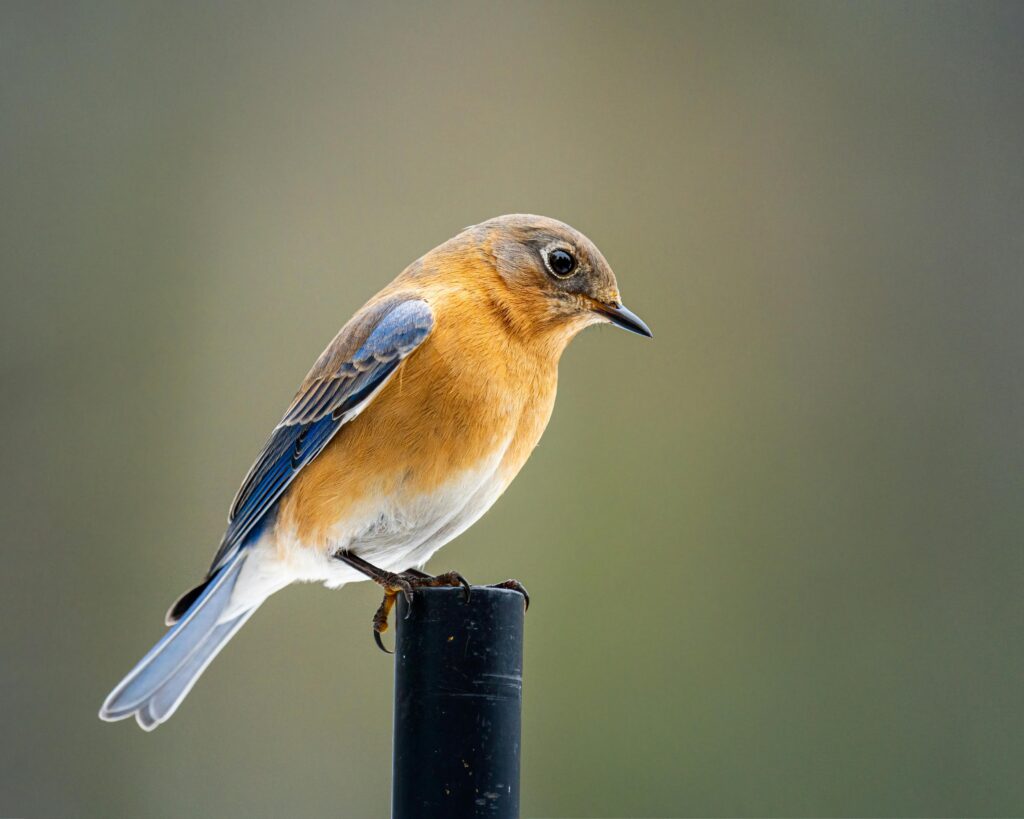
Water Sources – More Than Just a Drink
Water is a crucial element in creating a bluebird-friendly garden. These delightful birds need water not only for hydration but also for bathing, which helps them maintain their feather health.
In this section, we’ll explore how to provide water sources that meet these needs and attract bluebirds to your garden.
Importance of Water for Hydration and Bathing
- Hydration: Bluebirds, like all birds, need a regular supply of fresh water for drinking. Fresh water helps them maintain their metabolism and overall health, especially during hot summer days and in winter when natural sources may be frozen.
- Bathing: Bathing is essential for bluebirds as it helps them keep their feathers clean and in good condition for flying. Clean feathers provide better insulation and aid in easier, more efficient flying.
- Location and Accessibility: Place water sources such as birdbaths in open areas where bluebirds can easily see and access them. Ensure that these are close to their feeding areas but also safe from potential predators.
Tips for Keeping Your Birdbath Attractive to Bluebirds
Creating an inviting birdbath requires more than just filling a bowl with water. Here are some tips to make your birdbath a favorite spot for bluebirds:
- Shallow and Clean: Bluebirds prefer shallow water sources, as deep water can be a hazard. Keep the water depth around 1 to 2 inches. Clean the birdbath regularly to prevent algae growth and ensure hygienic conditions.
- Add Movement: Birds are attracted to moving water. Consider adding a dripper or a fountain attachment to your birdbath. The sound and sight of moving water can draw bluebirds from afar.
- Winter Care: During winter, water sources can freeze, making it hard for birds to find drinking water. Use a birdbath heater to keep the water from freezing, providing a consistent water source throughout the colder months.
- Regular Refills: Especially in hot weather, water evaporates quickly. Make sure to refill the birdbath regularly to keep a constant supply of fresh water.
By providing a well-maintained birdbath, you’re not only meeting the essential needs of bluebirds but also enhancing the appeal of your garden as a habitat.
In the upcoming sections, we’ll delve into the specifics of providing the right kind of shelter and creating an ideal habitat, rounding out your bluebird paradise.
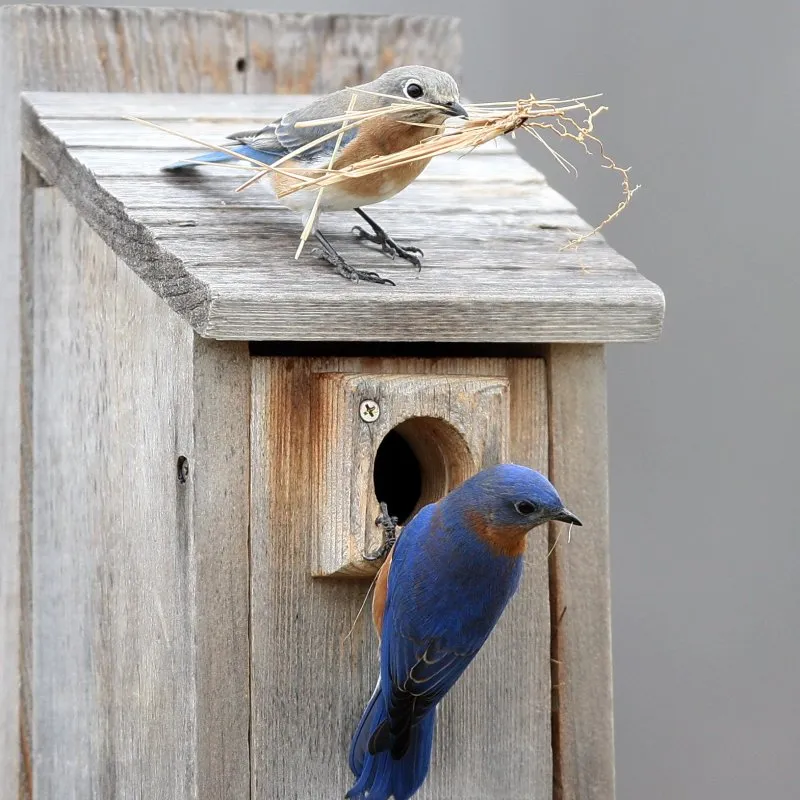
Shelter and Nesting – Building a Bluebird Haven
Providing appropriate shelter and nesting options is a crucial aspect of attracting bluebirds to your garden. Bluebirds are cavity nesters, which means they look for specific types of spaces to build their nests.
In this section, we’ll discuss how to set up and maintain nesting sites that are both appealing and safe for bluebirds.
Choosing the Right Nest Boxes and Placement
- Nest Box Specifications: Bluebirds prefer certain types of nest boxes. Choose or build a box with an entrance hole that is about 1.5 inches in diameter to prevent larger birds from entering. The box should have ventilation holes, a sloped roof, and drainage holes at the bottom.
- Placement: Position the nest boxes 4 to 6 feet above the ground and facing them towards an open area, as bluebirds prefer to fly directly to the entrance without obstructions. Avoid placing them near busy areas or close to feeders where other birds congregate.
- Spacing: If you’re setting up multiple nest boxes, space them at least 100 yards apart, as bluebirds are territorial during the breeding season. This spacing prevents conflicts and ensures each pair has enough food resources.
- Monitoring and Maintenance: Regularly check the nest boxes for signs of pests or damage. Clean them out at the end of each breeding season to prepare for the next.
Natural Nesting Alternatives and Predator Safety
- Natural Cavities: In addition to nest boxes, preserve natural nesting sites like old trees and snags. These provide alternative nesting spots and enhance the natural appeal of your garden.
- Predator Guards: To protect bluebirds from predators like raccoons, cats, and snakes, install predator guards on the nest boxes. These can be in the form of a baffle or a metal guard around the pole or tree where the box is mounted.
- Safe Environment: Keep the area around the nest boxes clear of tall grass and thick shrubbery where predators can hide. Regularly inspect the area to ensure it remains safe and welcoming for bluebirds.
- Avoiding Human Disturbance: While it’s tempting to frequently check nest boxes, minimize disturbance to avoid stressing the birds. Use a quiet approach and be respectful of their space, especially during the critical nesting period.
By carefully selecting, placing, and maintaining nest boxes, and by providing natural nesting alternatives with adequate safety measures, you can create a haven that bluebirds will return to year after year.
In the next sections, we’ll explore how to optimize the habitat in your garden to further cater to the preferences of these beautiful birds.
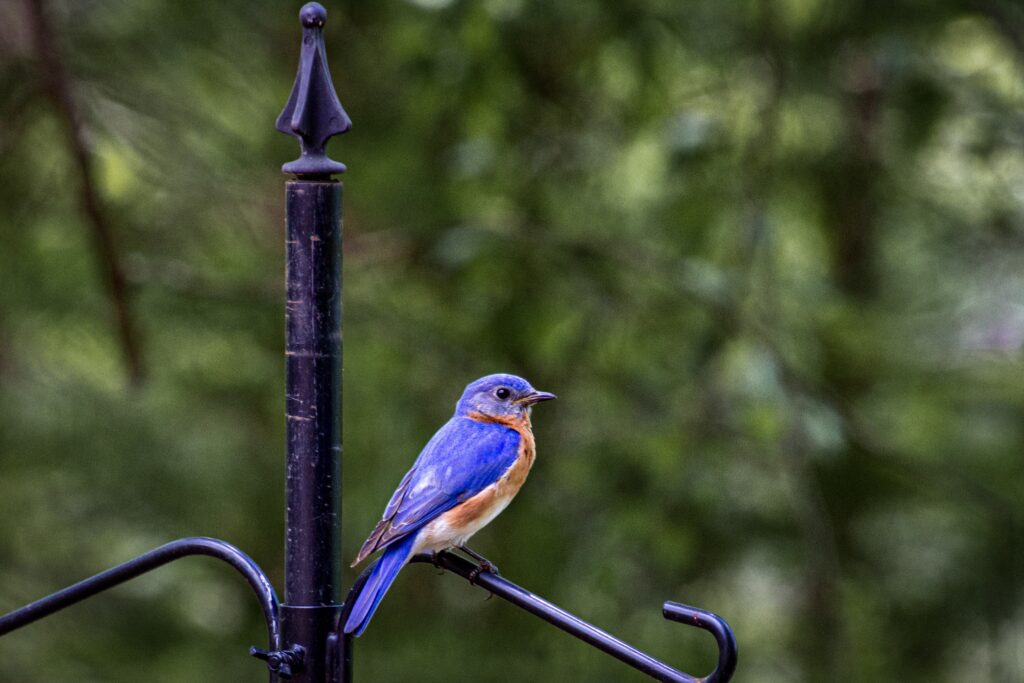
Habitat Preferences – Creating the Ideal Bluebird Environment
Bluebirds have specific habitat preferences that, when met, can significantly increase the chances of them visiting and nesting in your garden. Understanding and creating an environment that aligns with these preferences is key to attracting these delightful birds.
This section will guide you through optimizing your garden to cater to the bluebirds’ natural inclinations.
The Charm of Open Spaces
Bluebirds are fond of open spaces, as they provide an ideal environment for foraging and nesting. Here’s how to make the most of open areas in your garden:
- Lawn Maintenance: Keep your lawn somewhat short to allow bluebirds to easily spot and catch insects. However, avoid over-mowing or using chemicals, as this can reduce the insect population.
- Open Sightlines: Bluebirds need clear sightlines for hunting. Ensure that the area around their feeding stations and nest boxes is open and free of dense shrubs or tall grasses.
- Natural Insect Attraction: Encourage a healthy insect population by planting native grasses and wildflowers. These plants not only provide food for insects but also add beauty to your garden.
- Space for Flying: Bluebirds enjoy spaces where they can fly freely. Avoid cluttering your garden with too many decorations or dense plantings in areas you want to attract bluebirds.
Perching and Hunting – Setting Up the Perfect Spots
Perches are an essential feature in a bluebird-friendly garden. They provide spots for rest, observation, and hunting. Here’s how to create ideal perching and hunting spots:
- Strategic Perch Placement: Install perches like dead branches, poles, or trellises near feeding areas. Place them at varying heights to cater to the bluebirds’ preference for different vantage points.
- Safe Distances: Ensure perches are placed at a safe distance from potential predators. They should offer a quick escape route to cover if needed.
- Perches for Hunting: Bluebirds use perches to hunt by sight. Position perches so that bluebirds can easily see the ground below for foraging.
- Consider Variety: Include a variety of perching options in different parts of your garden to appeal to bluebirds’ exploratory nature.
By focusing on creating open spaces and providing strategic perching spots, you can make your garden a highly attractive and suitable habitat for bluebirds.
In the next section, we’ll look into seasonal considerations to ensure your garden remains a bluebird haven throughout the year.
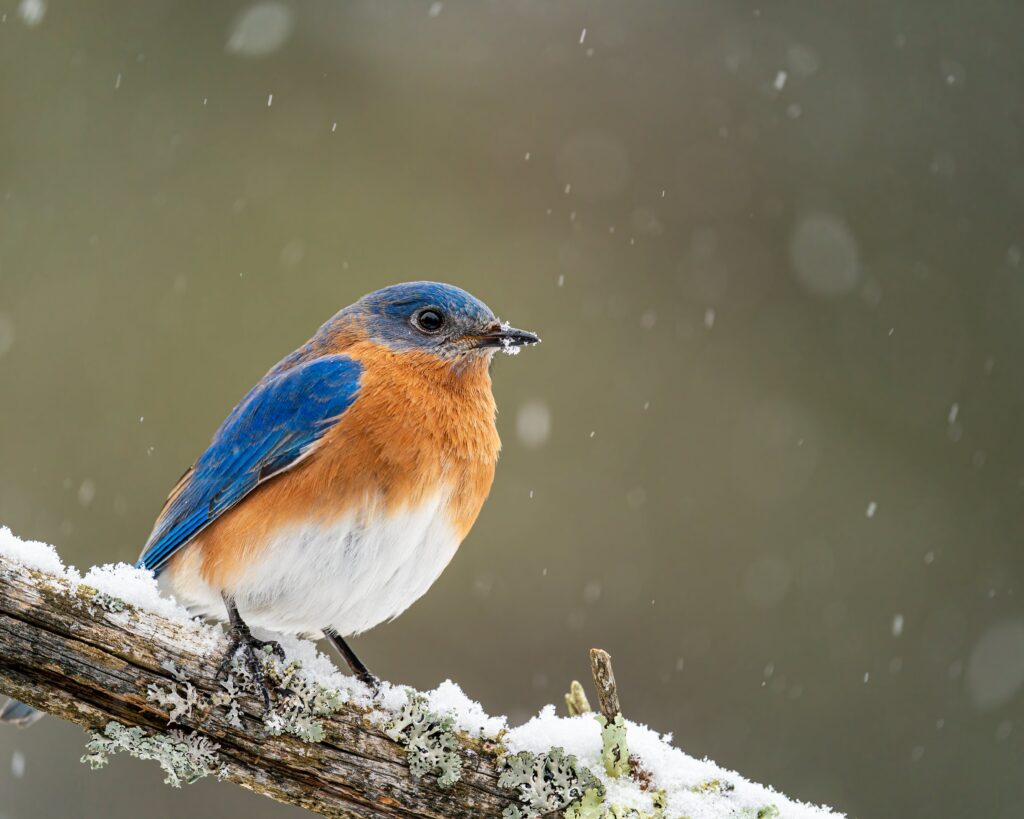
Seasonal Considerations – Year-Round Bluebird Care
Attracting and caring for bluebirds is a year-round commitment. As the seasons change, so do the needs of these charming birds.
This section will guide you through adapting your garden to provide continuous support for bluebirds throughout the year.
Adapting Your Garden with the Seasons
- Spring and Summer: This is the breeding and nesting season for bluebirds. Ensure that nest boxes are clean and ready for use. Increase the frequency of feeding, especially with mealworms, to support the energy needs of parents and their chicks. Keep water sources clean and filled for hydration and bathing.
- Fall: As the weather cools, bluebirds prepare for winter. They may start to form flocks and migrate to warmer areas. During this time, augment their diet with fruits and berries, which can be provided in feeders. This is also a good time to plant berry-producing shrubs for natural food sources.
- Maintaining Habitat: Throughout the year, maintain the garden’s habitat by keeping open spaces clear, managing perches, and ensuring a safe environment from predators.
Winter Care – Keeping Bluebirds Around in the Cold
Not all bluebirds migrate; some remain in their breeding territories year-round. Here’s how to support them during the colder months:
- Food Supply: Continue providing food, especially in areas where natural food sources are scarce. Suet, sunflower seeds, and mealworms are excellent food choices during winter.
- Water Availability: Keep water available and unfrozen. Use a heated birdbath or a birdbath heater to prevent water from icing over, ensuring bluebirds have access to drinking water.
- Shelter: Provide roosting boxes or dense shrubbery for bluebirds to take shelter in during cold nights. These shelters protect them from the elements and help conserve their body heat.
- Minimize Disturbance: As food and resources are scarce in winter, it’s important to minimize disturbance around feeding and sheltering areas to provide a stress-free environment for bluebirds.
By adapting your garden with the changing seasons and providing consistent care, you can encourage bluebirds to visit and stay in your garden throughout the year. Creating a welcoming environment for these birds not only enhances the beauty of your outdoor space but also contributes to the conservation of these delightful creatures.
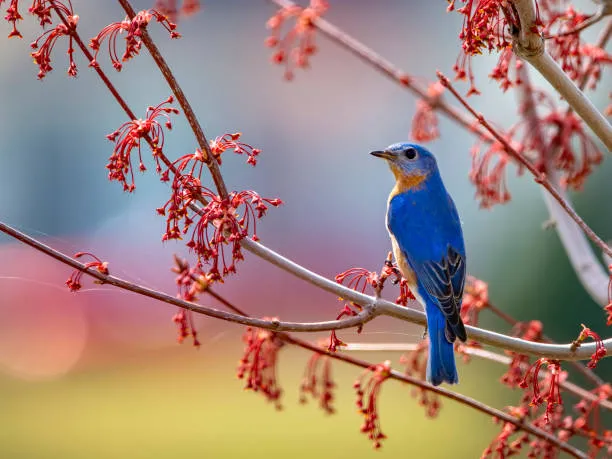
Bullet Point Summary
- Understanding Bluebirds:
- Familiarize yourself with the different species: Eastern, Western, and Mountain Bluebirds.
- Recognize their preference for open habitats and their insectivorous diet.
- Nutritional Needs:
- Provide mealworms in a dish feeder for a protein-rich supplement.
- Maintain a chemical-free garden to ensure a healthy insect supply.
- Water Sources:
- Install shallow birdbaths for hydration and bathing.
- Keep birdbaths clean and consider adding a water movement feature.
- Shelter and Nesting:
- Use nest boxes with specific dimensions and place them 4-6 feet above ground.
- Preserve natural cavities and use predator guards for safety.
- Habitat Preferences:
- Maintain open spaces with clear sightlines for foraging.
- Provide various perching options near feeding areas.
- Seasonal Considerations:
- Adjust food and shelter with the changing seasons, focusing on mealworms and berries.
- Provide unfrozen water and insulated shelters during winter.
Conclusion
Embarking on the journey to create and maintain a bluebird-friendly garden, you’ll soon discover that not all blue is created equal. While we roll out the red carpet for the charming bluebirds, it’s wise to remember that their more boisterous cousins, the blue jays, might also be eyeing up the amenities! Check out this article for ways to keep out blue jays!
Anyhow, as you watch these vibrant birds flit and sing in your garden, you’ll find that each effort you’ve made—be it setting up the right nest boxes, maintaining a chemical-free lawn, or ensuring a steady supply of mealworms and fresh water—pays off in the form of their joyful presence. Bluebirds bring more than just color and song to your garden; they bring a sense of peace and a connection to the natural world.
So, whether you’re a seasoned birdwatcher or a nature enthusiast looking to start a new venture, let your garden become a haven for bluebirds. The time and care you invest will not only benefit these beautiful birds but also enrich your own outdoor experience. Here’s to the joys of birdwatching and the enduring charm of bluebirds—may your garden flourish as a sanctuary for these feathered treasures! 🐦💙
